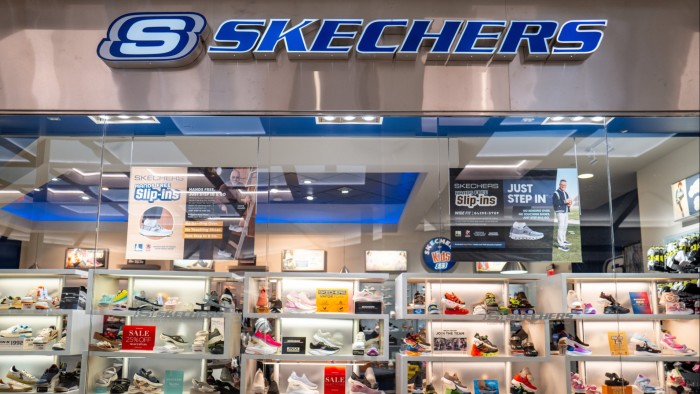Unlock the Editor’s Digest for free
Roula Khalaf, Editor of the FT, selects her favourite stories in this weekly newsletter.
Private equity firm 3G capital made its name as an aggressive cutter of costs at companies such as Kraft Heinz. Now it seems to be slipping into something more comfortable.
Its $9.4bn swoop on sneaker maker Skechers this week flies in face of the broader slowdown in Wall Street wheelings and dealings. The timing is impeccable, though. Skechers shares hit a record high in March, then plunged after President Trump unleashed his trade war in April. While 3G is paying a 30 per cent premium to Skechers’ 30-day average share price, its $63 a share cash offer is still about a fifth cheaper than where the stock was trading at four months ago.

But Skechers also comes with some quirks that make it an appealing takeover target even in a market where many buyers are hesitant. Robert Greenberg, the company’s 85-year-old founder and long-standing chief executive, controls about 60 per cent of the voting rights along with his family, giving them the ultimate say over the direction of the company.
Against the backdrop of Trump’s tariffs and weakening US consumer demand, the 85-year old Greenberg must have felt it would be easier to ride out the uncertainty away from the public market. And 3G has been able to offer an unusual way of getting him on board: a stake in the new company. Other shareholders also get a limited opportunity to do likewise.
Skechers isn’t what you might call an edgy brand. Its shoes are not sought after by sneakerheads or flipped on resale sites. Instead, its appeal is comfort and affordability, which has won fans among women, kids and baby boomers. Sales nearly tripled over the past decade to $9bn last year, making it the world’s fifth largest shoe company after Nike, Adidas, Puma and China’s Anta Sports.
Trump’s 145 per cent tariff on Chinese imports may also bite less hard than the sell-off in Skechers shares suggests. About 40 per cent of Skechers’ products are from China, according to Barclays. But the company generates only about a third of its sales from the US. Compare that with 88 per cent at Gap, for example. There may be scope to divert China-made products to non-US markets, and keep prices stable in the US. Skechers’ could also benefit as squeezed consumers look for more affordable footwear options.
Skechers has very little debt, which means 3G should be able to borrow fairly easily in order to finance its deal. With a clean balance sheet, more flexibility in its business model to deal with tariffs than some of its peers and a large, willing shareholder, it’s not surprising the company has found an attractive deal in a sparse M&A market. For other would-be takeover targets, these are big shoes to fill.


